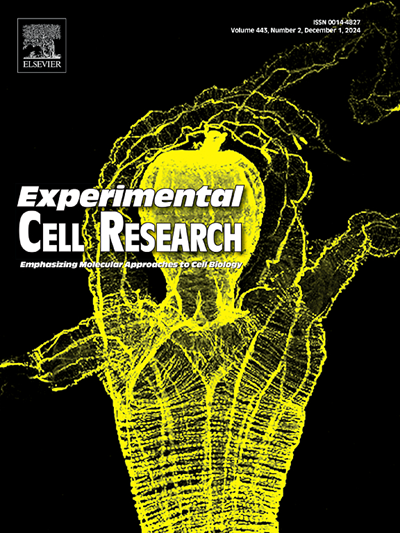Basal and AT2 cells promote IPF-lung cancer co-occurrence via EMT: Single-cell analysis
IF 3.3
3区 生物学
Q3 CELL BIOLOGY
引用次数: 0
Abstract
Idiopathic pulmonary fibrosis (IPF) is a chronic, progressive, fibrotic interstitial lung disease. With IPF, the probability of complication with lung cancer (LCA) increases considerably, and the prognosis is worse than that of simple IPF. To understand the pathological mechanisms and molecular pathways shared by these two diseases, we used the single-cell analysis from the Gene Expression Omnibus (GEO) database, and find that basal cells (BCs) and alveolar type 2 cells (AT2 cells) are important components of lung epithelial cells. Changes in molecular pathways in BCs and AT2 cells may be involved in the common pathogenesis of IPF and LCA. KRT17 and S100A14 in BCs may promote the IPF co-occurrence with LCA by mediating the EMT. WFDC2 and KRT19 may be the elements in AT2 cells that activate the EMT process to promote IPF co-occurrence with LCA. In both IPF and LCA, FN1-WNT axis may be involved in the interaction between BCs and AT2 cells. Importantly, the results of immunofluorescence colocalization experiments on tissue samples from patients with IPF and LCA were consistent with these conclusions. Basal-macrophage interactions may have also induced the IPF co-occurrence with LCA via the CYBA-ERK1/2 axis. The regulation of M2 macrophage polarization by JUN/SOD2-glycolysis axis may therefore be involved in the co-morbidity mechanism of IPF and LCA. Therefore, our results suggest that molecular changes in BCs, AT2 cells and macrophages may play important roles in the pathogenesis of IPF co-occurrence with LCA, and the cellular interactions between these cells may be critical for the progression of both diseases.
基底细胞和AT2细胞通过EMT促进ipf -肺癌共发生:单细胞分析
特发性肺纤维化(IPF)是一种慢性进行性纤维化间质性肺疾病。合并IPF,合并肺癌(LCA)的概率显著增加,且预后较单纯IPF差。为了了解这两种疾病共有的病理机制和分子通路,我们利用基因表达综合数据库(Gene Expression Omnibus, GEO)的单细胞分析,发现基底细胞(basal cells, BCs)和肺泡2型细胞(alveolar type 2 cells, AT2 cells)是肺上皮细胞的重要组成部分。BCs和AT2细胞分子通路的改变可能参与了IPF和LCA的共同发病机制。BCs中的KRT17和S100A14可能通过介导EMT促进IPF与LCA的共发生。WFDC2和KRT19可能是AT2细胞中激活EMT过程促进IPF与LCA共发生的元件。在IPF和LCA中,FN1-WNT轴可能参与了bc和AT2细胞之间的相互作用。重要的是,IPF和LCA患者组织样本的免疫荧光共定位实验结果与这些结论一致。基底-巨噬细胞相互作用也可能通过CYBA-ERK1/2轴诱导IPF与LCA共发生。因此,JUN/ sod2 -糖酵解轴对M2巨噬细胞极化的调节可能参与了IPF和LCA的共发病机制。因此,我们的研究结果表明,bc、AT2细胞和巨噬细胞的分子变化可能在IPF合并LCA的发病机制中起重要作用,这些细胞之间的细胞相互作用可能对两种疾病的进展至关重要。
本文章由计算机程序翻译,如有差异,请以英文原文为准。
求助全文
约1分钟内获得全文
求助全文
来源期刊

Experimental cell research
医学-细胞生物学
CiteScore
7.20
自引率
0.00%
发文量
295
审稿时长
30 days
期刊介绍:
Our scope includes but is not limited to areas such as: Chromosome biology; Chromatin and epigenetics; DNA repair; Gene regulation; Nuclear import-export; RNA processing; Non-coding RNAs; Organelle biology; The cytoskeleton; Intracellular trafficking; Cell-cell and cell-matrix interactions; Cell motility and migration; Cell proliferation; Cellular differentiation; Signal transduction; Programmed cell death.
 求助内容:
求助内容: 应助结果提醒方式:
应助结果提醒方式:


